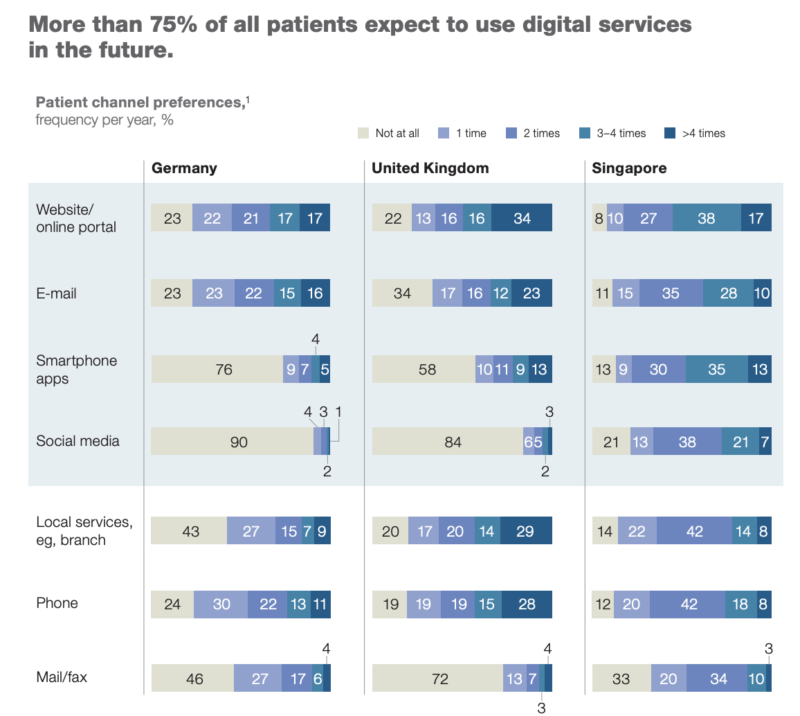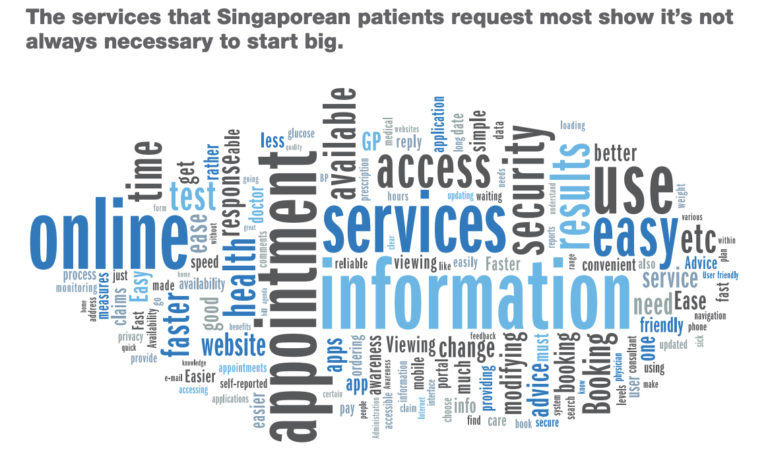blog
Digital Future Of Singapore Healthcare Industry
By Siddhant Chaudhary Digital transformation Healthcare May 16, 2020

Digitization of products and services in the healthcare and hospitality industry has comforted patients to a great extent. We are consistently innovating our tech-potential to keep up with the needs of our patients. Let’s build upon some digital strategies for the healthcare industry to keep our patients healthy and happy.
Introduction
The evolution of IT at a rapid pace has served as a boon to many functions like payroll, accounting, HR and operations. This came to be known as the first wave of IT adoption. Business processes like operations and performance management integrated with many other B2B tools, thereby leading to the evolution of the second wave of IT adoption. This arose primarily due to the impact of the integration in the healthcare sector. And now, as per our current IT advancements, private and public sector institutions are into the third wave of IT adoption.
We are planning full digitization of their entire enterprises, including products, processes, analytics, etc. which would eventually build new operating models. We are trying to understand the needs and preferences of our patients, just like other industries have carried out. So, let’s dive into some pragmatic insights discussing the needs of patients, which can lead to a healthy digital patient-enablement journey.
Insights revealing the actual needs of patients
There are some myths regarding the prevalent digital healthcare strategies, which are no longer true. Let’s know about them in brief:
- Myth 1: People don’t tend to use digital products and services for healthcare: Many members of healthcare management have thoughts that patients don’t want to utilize digitized services because of the sensitive nature of medical care. But, the results of our survey report that patients are slow to adopt digital healthcare due to the prevalent services not fulfilling their needs. Patients are keen to adopt digitized services into their life as long as they meet their levels of need and quality.
- Myth 2: Only the young generation is fond of utilizing digitized resources: It is indeed an existing myth that only young people are fond of using digitized healthcare services. But our survey has resulted that older patients are also equally interested to wield these services and products. Although older patients still prefer using traditional digital channels and processes.
- Myth 3: Patients require innovative features and applications: Health systems and providers believe that patients require innovative designs for digital services. But the truth is that they expect more core features to be incorporated for their own sake, such as access to information and greater executional efficiency. Services with innovation and attractive designs are just useless for patients.
- Myth 4: An extensive platform required for offering services to build value: Generally, organizations, when going digital, have a belief that they must do big by building comprehensive platforms along the entire spectrum of consumer products and services. Instead, as per the latest survey conducted, they are required to start small and act smart and fast. People want assistance with their routine jobs and navigation of the healthcare system. Germany, Singapore and United Kingdom are three different countries with three different healthcare systems. Patients most often want assistance with one essential need, primarily finding and scheduling physician appointments. Other frequent needs revolve around support for repetitive administrative tasks, for example, prescription fills and selecting the right specialist for treatment. These jobs do not require massive IT investments and comprehensive platforms to get accomplished.
Comparison of the provision of healthcare services between Germany, UK & Singapore
There was a Digital Patient survey conducted in 2014 in Germany, Singapore and United Kingdom gathering the data regarding the usage of digital services by patients. More than 70% of older patients (over 50 years) want digital healthcare services in Germany, UK, and Singapore, just as much as the younger generation. In Singapore, the number is even higher. There are several digital channels though, such as Email, Social Media, Apps and Websites, etc which are utilized by patients, with different frequencies in Singapore.

Patients are made aware of the digital services, while at the same time, process execution has been progressing in the countries. We have incorporated increased awareness of online services to the customers. We bring in a wider range of value-added services which prove more helpful, rather than execution of processes directly on the online platform. There is a clarity of information available to the patients which attract them even more to use our digital products and services.

Conclusion
We have therefore analyzed the basic criteria as well as the changing demands of our patients. We are on a run to add new services continually to maintain the attention of patients and build value in the market. Patients are pretty much familiar with generic ideas of our digitized products and services. This is paving us a way to develop more complex and high-value products and services. We are on our way to acquaint our patients with fully digitized services as per their needs and desires, considering all the myths apart.

Patients around the world have grown more comfortable using digital services and networks. They are happy to bring our services to their comfort zone even for sensitive issues. Some examples are ZocDoc, DrEd, etc. Although, there have been certain challenges in terms of finance and resources, with the changing expectations and demands. To be precise, cybersecurity, skilled staff, accessibility and affordability are the challenges. Digital Technology has the potential to impact every private and business life. This, in turn, enables smarter choices like allowing people to spend more time on tasks they presume valuable.


